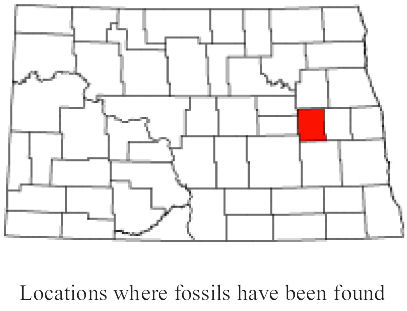
Mosasaurs were the dominant predator in the oceans of the late Cretaceous and were certainly the marine equivalent of Tyrannosaurus rex . The finding of the first Mosasaur remains in the Netherlands about 1780 ( Mosasaurus hoffmanni ) predates the discovery of dinosaurs by more than fifty years, yet they have been frequently ignored in the media and text books on paleontology in favor of the more popular ichthyosaurs and plesiosaurs.

Mosasaurs were huge predatory marine lizards, up to 40 feet in length that inhabited the world's oceans during the Cretaceous. This skeleton is one of the mosasaurs called Plioplatecarpus that inhabited the Pierre Sea about 75 million years ago. It was discovered in 1995 by Mike Hanson and Dennis Halvorson on Orville and Beverly Tranby's farm in the Sheyenne River Valley near Cooperstown, in Griggs County , North Dakota. Mosasaur were Reptiles, but not dinosaurs. They are: Vertebrates, Tetrapods of the Diapsids of the Order Squamata of the Family Mosasauridae and Subfamily Mosasaurinae (long-bodied mosasaurs) of the Genus Mosasaurus
The mosasaurus anceps and mosasaurus beaugie were one of the success stories of the late Cretaceous period. The largest known mosasaur is Hainosaurus, which could reach 17 meters in length. Giant mosasaurs were the top predator in the sea and were widespread across the world. Much of their day would have been spent swimming slowly near the seabed looking for suitable prey to attack. Their diet consisted of slow moving animals like ammonites, birds and turtles but they would also tackle larger and swifter prey, such as sharks and plesiosaurs, when the opportunity arose.
As the mosasaurs were not fast swimmers, they would have stalked their prey using natural cover provided by seaweed and rocks. Only when the prey was within striking range would the mosasaur propel itself forward. Mosasaurs were meat-eaters with big, sharp teeth. The crowns of these teeth are over an inch long. Being caught in a mosasaur's jaws meant almost certain death.